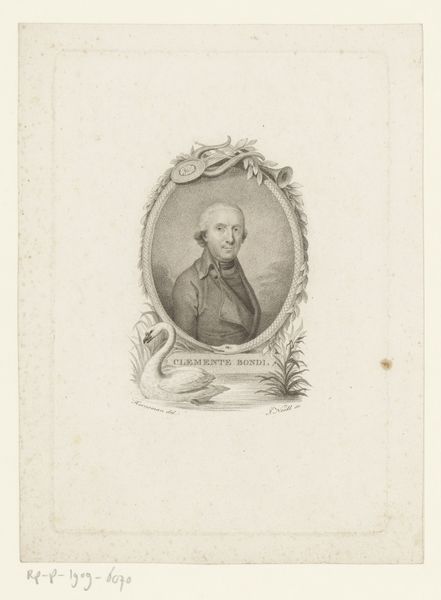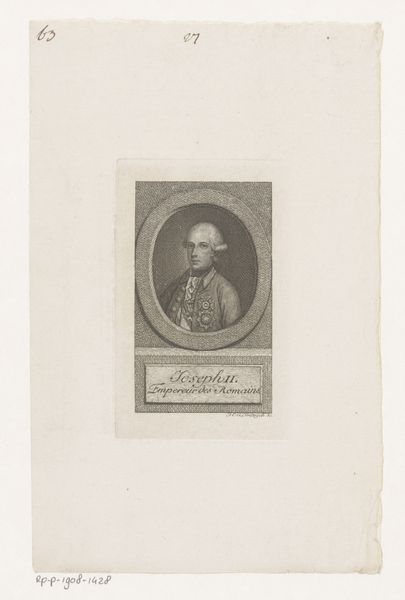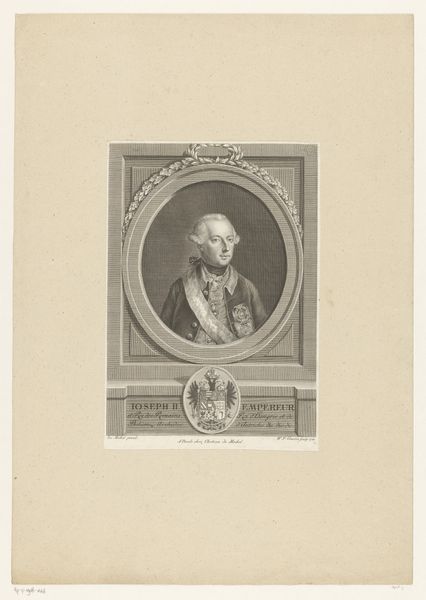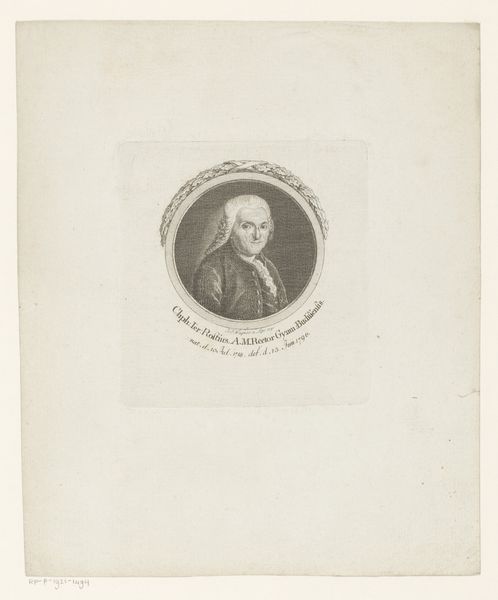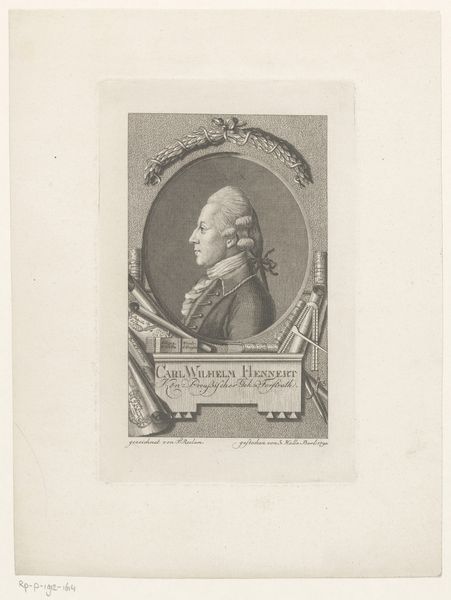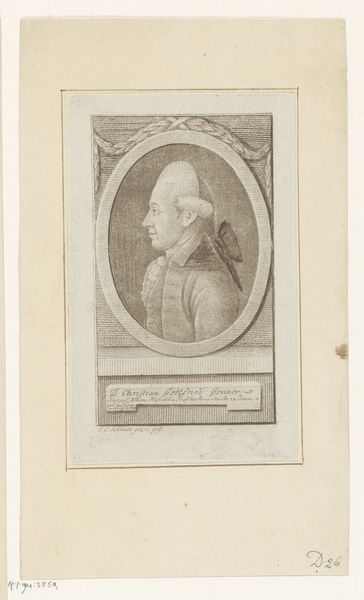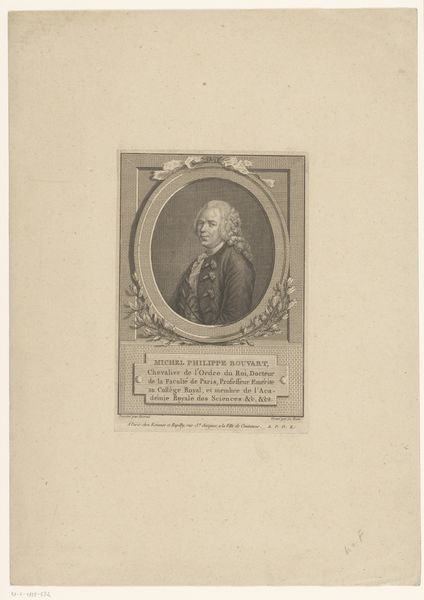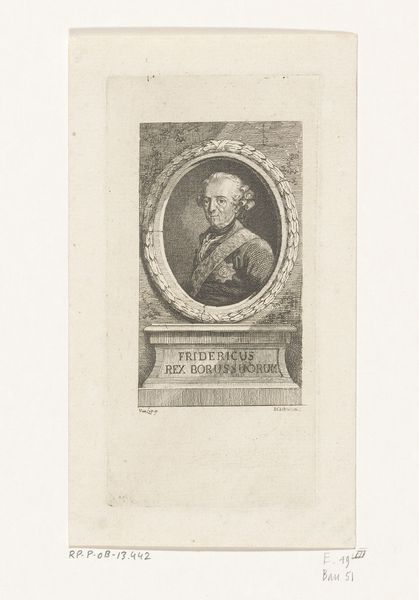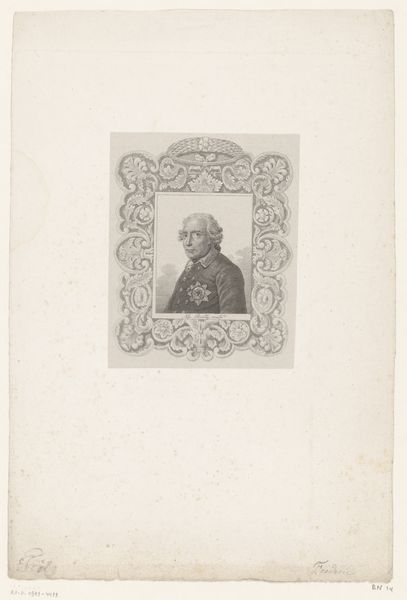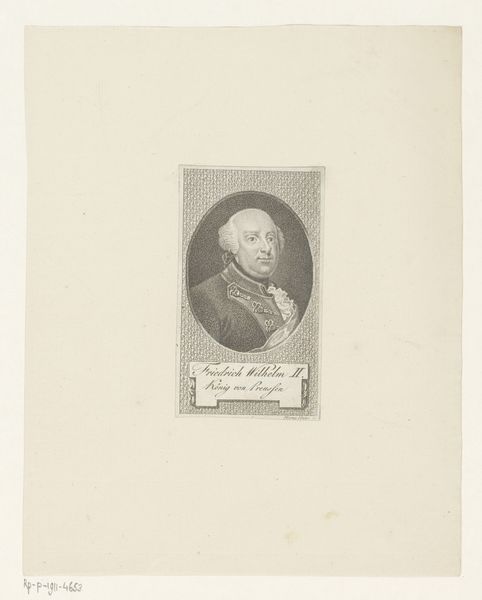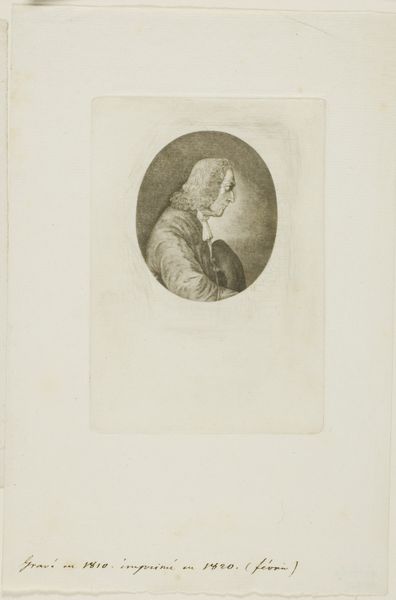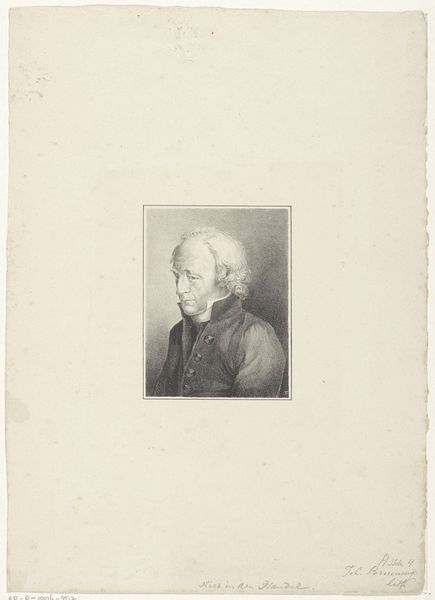
engraving
#
portrait
#
neoclacissism
#
academic-art
#
engraving
#
realism
Dimensions: height 305 mm, width 232 mm
Copyright: Rijks Museum: Open Domain
Editor: We're looking at "Portret van Johann Peter Frank", an engraving by Carl Hermann Pfeiffer from sometime between 1779 and 1829. The portrait has such a cool, intellectual feel to it, doesn’t it? The subject is posed within a circle, like a cameo. What historical insights can we glean from this kind of portrait? Curator: This portrait reflects a significant shift in the role of art in society and the changing perception of professions, especially those related to public health, during that period. Notice how Pfeiffer situates Frank, presumably a man of science or medicine, within the visual vocabulary of Neoclassicism? That curtain and column nod to power, learning, and permanence. How does framing a physician within such visual cues affect how we see the medical profession, do you think? Editor: I guess it elevates the profession. It connects medicine with the established power structures. It moves away from seeing doctors as simply tradesmen and positions them almost as philosopher-kings. Is it also commenting on the enlightenment value placed on education? Curator: Precisely. Engravings like these also played a vital public role. Before photography, they circulated ideas and images of prominent figures. By making Frank’s image accessible, Pfeiffer contributes to the building of his reputation. Do you see any echoes of this today? Editor: All the time! Think about how carefully curated Instagram profiles can build someone’s brand, but now it is an instantaneous global level. I had not considered how that used to be achieved using prints such as these. I have learned to think about portraiture within its wider function within the history of image-making and power. Curator: Exactly. Analyzing such works through a historical lens shows how art is embedded in complex cultural and social structures.
Comments
No comments
Be the first to comment and join the conversation on the ultimate creative platform.
